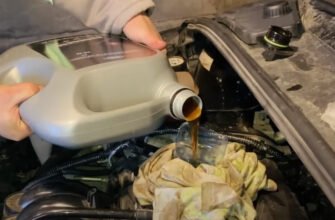If your Ford Escape AC is not blowing cold air, or worse, is blowing warm air, it could signal a problem no car owner ever wants to face.
In some cases, you might notice that there is no airflow from the vents. While this is similar, it is a completely different issue from when your AC is blowing cold or warm hair.
You might need a bit of technical knowledge to get things done. However, this guide should help you identify the problem and fix it even without professional assistance.
Ford Escape AC Not Blowing Cold Air: Likely Causes & How to Fix

AC Refrigerant Leaks
If your Ford Escape AC uses refrigerant, then a leak could be the reason why it is not cooling but blowing warm hair. The refrigerant is a fluid designed to vaporize at a low temperature and cool the air below it then blown through the vents into the vehicle.
If there is a leak somewhere, this will make the AC system less effective at cooling the air thus you will notice that it only blows warm air or it is not blowing at all.
Refrigerant leaks are usually due to failure or faults in other components within the system. This could be either the compressor or evaporator. It could also be a sign of aging if you have an older vehicle. This is due to the wearing of the rubber seals on the hoses and other parts which could cause the refrigerant to leak.
If you had been involved in an accident with your car, it could also lead to damage that would cause the refrigerant to leak.
To confirm that the refrigerant is leaking, you need to check the AC compressor. If the refrigerant is leaking, the compressor clutch might not be able to engage. However, this also happens when the system is very low on refrigerant. You could notice the compressor would cycle on and off frequently.
If you notice that any of these signs then you need to check for leaks immediately.
Turn off the engine and look out for a hissing sound from the AC system. Also, check for oil residue from or around AC hoses. In addition, you can get a special tool that can detect AC refrigerant gas.
While this is something you can do and detect on your own, it is best to leave it to only trained technicians. Refrigerant is a toxic chemical that could pose a health risk if released into the atmosphere. To avoid any further complications, you should avoid doing this inspection yourself if you’re not very familiar with vehicle components.
If you decide to go on with the fix and you notice a part of the AC system responsible for the leak, then you need to repair or replace the affected part. If too much refrigerant fluid has already been lost, then a full AC recharge is necessary to replace it with the right amount of refrigerant needed for the AC to function properly and blow cool air.
Climate Control Electrical Issues
On your car control screen or system, you will find several buttons and knobs that you use to adjust the temperature in your car. This tells the AC computer how warm or cold you want your vehicle to be.
Just like with any electrical system, glitches or failures do happen and could affect the performance of your vehicle’s AC. This could be due to faulty wiring and you will end up receive warm air or possibly, your vehicle’s AC would stop working completely.
You could check the wiring of the control system to figure out the issue, but that only if you’re a mechanic yourself. If that’s not the case, then you would need to employ a technician to check the components and diagnose the actual cause of the problem. For a faster and easier fix, explain to the technician the signs that the vehicle had been showing before it totally failed or stopped blowing cold air.
AC Compressor Problems
The AC compressor is one of the most important parts of the air condition system. It’s is engineered to move the refrigerant through the system and regulate the temperature of the refrigerant gas.
If it breaks down, the refrigerant would no longer be able to efficiently move through the system so you get warm air blowing out of the vents.
While an AC compressor failure could lead to AC problems, there are other issues that may arise. When repairing or replacing the compressor, you need to check for defective wiring, a bad fuse, a bad pressure switch, and a bad control module.
Replacing the AC compressor is the best fix though it some cases, it could be fixed. However, this is not recommended as the problem could reoccur in the future.
With the AC compressor replaced, you should also replace a few more components.
The AC accumulator or receiver dryer which helps to remove moisture from the refrigerant should be replaced.
An internal compressor failure would result in metal shavings been distributed throughout the system. You should need to have the system flushed and also replace other damaged parts.
Also, check if the drive belt is showing any signs of damage. If so, then you should replace it.
No Airflow from the Vents
If rather than a warm air blowing out of the vents, you notice that there is no airflow, then it could be that there is a problem with the blower motor. Damage or failure of the blower motor and the passageway flaps and doors will cause airflow issues.
The most common reasons for this type of failure would be due to failure in the motor or the system controlling it.
Final Thoughts
A problem with your AC system shouldn’t cost you much to fix, however, you shouldn’t try saving on the costs by doing everything yourself. Having a trained technician to handle the critical components will not only save you time but also money. With a trained technician getting things done, the AC system is less likely to develop more or new faults in the future.







